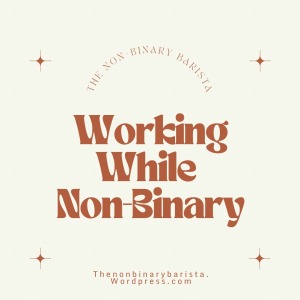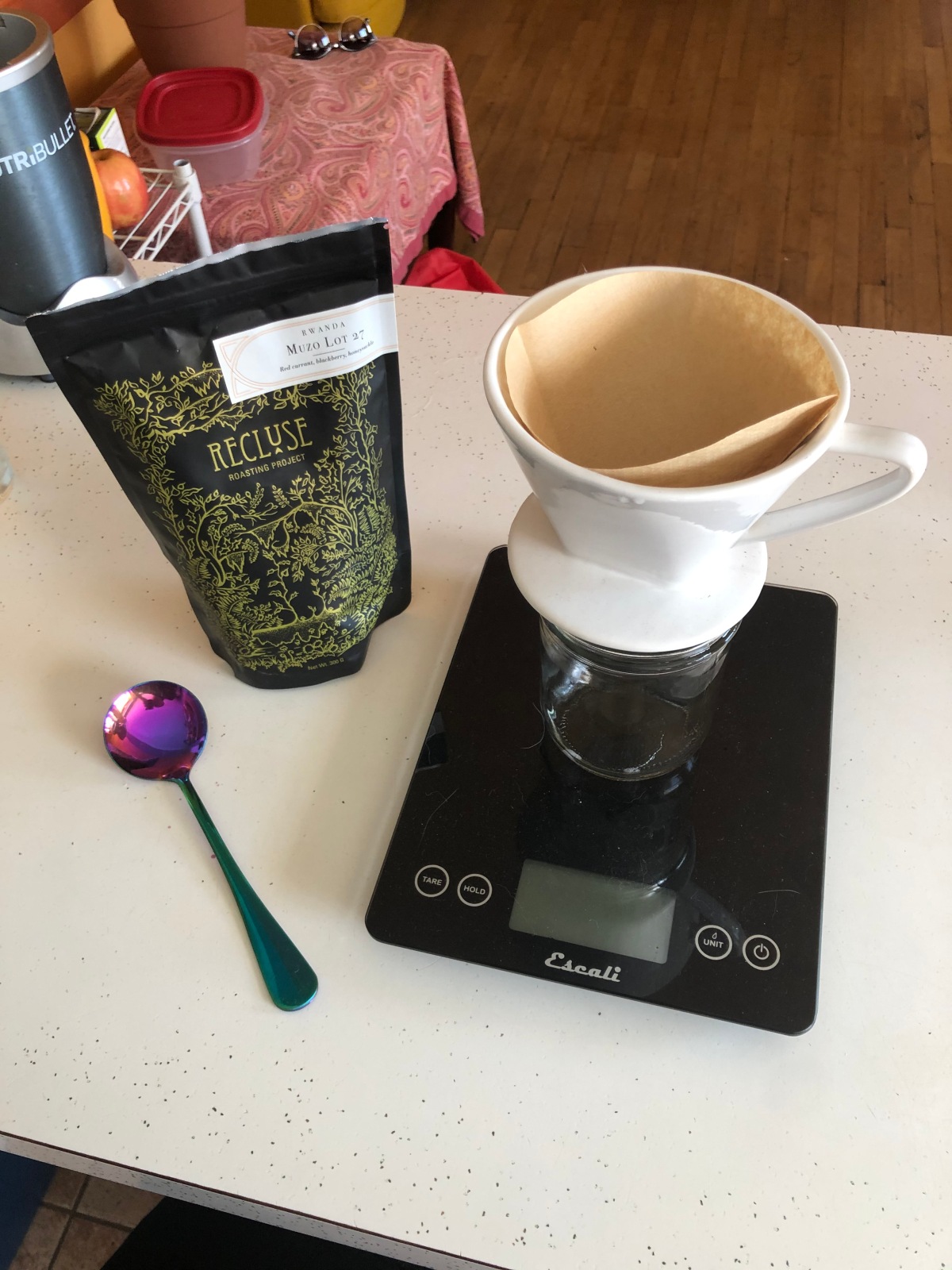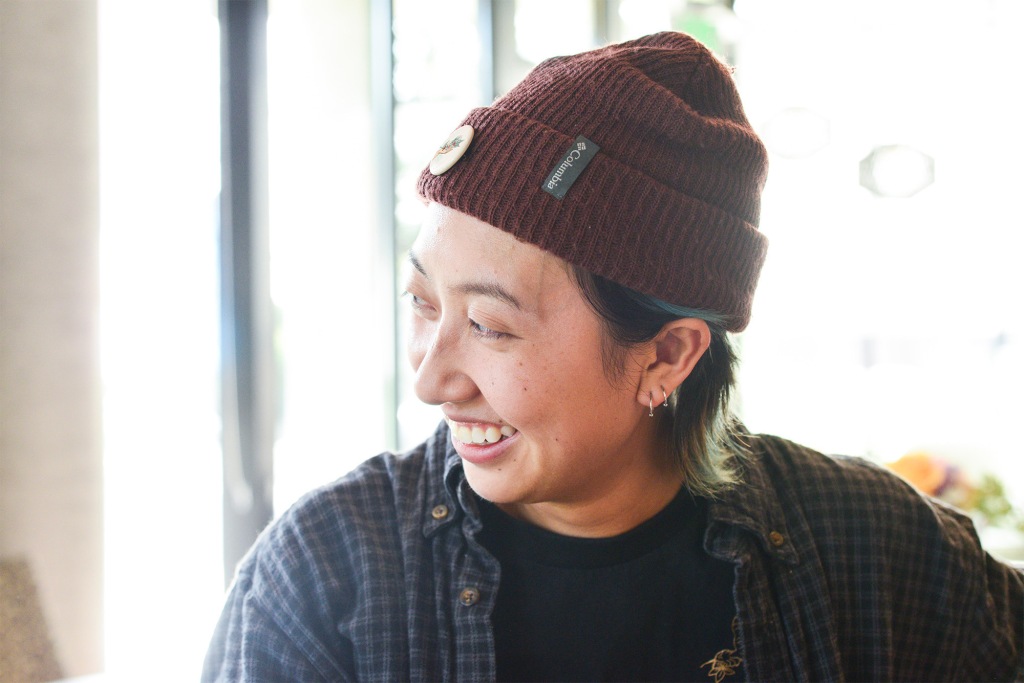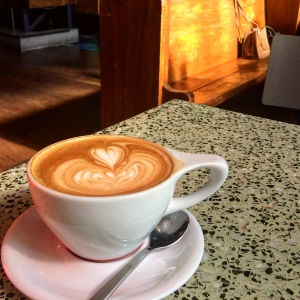While it is in my bio, I don’t tend to talk about it on the blog but I live in Portland, Oregon. As Black Lives Matter protests have erupted all over the country, I struggled with posting on here because I didn’t know how to discuss what was going on in our country without writing whole articles just on that even though it didn’t necessarily relate to being non-binary or working in coffee.
[[[Important note: Black Lives Matter, police brutality, and racism is deeply engrained in the US, and the world, and affects every part of life, including the coffee industry. It does relate to the coffee industry, as it does every other industry because so many systems of modern society are plagued by institutional racism and systemic violence against BIPOC people. What I mean in the above statement is that I, as a queer, white coffee blogger did not know how to write about these topics in a way that did not feel forced or like I was trying to talk over those who were already calling out these issues in the coffee world. While I did not write about it, I was actively searching for ways to call attention to these issues that was helpful and not performative.]]]
But, as it always does, the coffee world and the baristas I love continue to surprise me. I saw and talked to friends protesting in Los Angeles, Seattle, New York, Portland, and more. Including some who were utilizing both their voice and coffee skills by serving coffee to protesters.
Enter one of my favorite people, Felix Tran.
I got to sit down with him virtually and talk about his experience protesting and serving coffee during the protests in Seattle, Washington recently.
Hello! So, want to start off by introducing yourself?
Yes, I am Felix Tran. I use he/they pronouns. I’m based in Seattle and, right now, I do freelance barista work and freelance digital work like illustrations and graphic design.
Cool. So, you were involved with the protests going on. Can you tell me what you did with all that?
Yeah, for sure. Luckily, I have a platform, called CoffeeAtLarge, and a follower reached out and wanted to support the Seattle protest scene around the time that people were protesting daily and they were staying overnight. We wanted to figure out a way to provide food, water, and caffeine to folks who were protesting so that we could fuel protestors all day, every day. That was the goal, to keep protestors out every single day until demands were met. To keep the momentum going. So, we reached out to local Seattle coffee shops and coffee companies, asked for donations, got a bunch of cups, and we got a bunch of coffee. We were able to provide water, food, and drinks and because we were literally on 11th and Pine where the protests were happening, we were able to see what was going on on the ground. Gather information, on ops, on movement, on what was going on that was shady. That was our involvement.
What did the day-to-day look like? As far as your personal life, protesting, and everything else going on?
I am a person of a lot of privilege. I am light-skinned, I come from a middle-class family, I also grew up in NorCal/Central California, and I just come from a lot of privilege so when I’m pretty sure Black folks have experienced this trauma and are still grieving which is not fair. For me, seeing how many Black folks were getting killed by the cops every single week was taking a toll. And we all sort of erupted, like, “fuck this shit,” and saying that we were upset about it. So, I abandoned my personal life and I think most Seattle protestors did because it’s like, “Fuck this, I’ve been complicit in this. How can I use my emotional capacity to make a change because Black folks can’t step away from the death of other Black folks?” They like literally see it and are retraumatized over it every day. So, for me, a person of color who has a lot of privilege, I can step away if I need. If I wanted to, I could remove myself and emotionally separate. So, me and a lot of others decided to abandon our emotional capacity and our personal lives to dedicate ourselves to keeping the momentum going.
It’s easy to read about it but, zooming out, what was your experience like? Like what did you see, how did you feel about all of it?
It’s so interesting to see when the cops left the place that we were protesting in. It was called CHOP, but there were a lot of different names for it. There was CHAZ, CHOP, and then like some other names but it was interesting seeing folks comment on CHOP and news articles writing about what our experience was. Like most of them were wrong. Most of the people did not have a good understanding of what was going on in Seattle. A lot of people had opinions about that space. Folks were getting killed in drive-by shootings and a lot of people on Twitter, who were white supremacists, were saying that folks deserved to die. These are people, you know? It was very upsetting to see people comment on our experience and most of the time it wasn’t true. It was really weird, seeing that.
So, the first day that protests happened, it started in Westlake and that’s where all the really intense photos were from like the cars burning. And we were just trying to march, and eventually, we tried pushing forward and then we were tear-gassed. We were pepper-sprayed and flashbangs were everywhere, and it was horrible. And honestly, that was my first protest so that was emotionally overwhelming but as you continue to go, that shit happens all the time. Like you get used to it. Well, you don’t get used to it but learn how to wear appropriate gear and handle pepper spray and tear gas.
How did things change during the days you were out there? Like messaging, morale, or like the organization of everything?
Oh my gosh, every day was so different! So, some days, the cops were just standing there and other days, like on the weekends, they would tear gas and push forward. The night before the cops left, they deployed so many flashbangs and destroyed stuff. So, it was honestly day-to-day, but protestors got better at organizing. The community leaders organized groups via Signal, Telegram, and we got better at keeping our identities anonymous because folks were getting arrested.
I remember seeing you post about the difficulties transporting coffee and brewing large batches of coffee. Can you go into more depth about the hurdles and difficulties with giving out coffee at the protests?
I am fortunate that the company that I work for let me use the space whenever I wanted. I could brew coffee any time of the day, and, although people let us borrow their airpots that were much bigger, the thing is that every single day I don’t know what’s going to happen. I don’t know if my equipment is going to get destroyed, because our tables and tents had gotten destroyed before so I can’t put someone else’s stuff at risk because some of the folks wanted it back. And we were all volunteers. I was doing my best to organize, communicate, and keep track of everyone else’s stuff.
I had twelve airpots and I would have to brew coffee every single morning and that took like three hours. I would then go to the protest area, find parking in that hell hole (which is Capital Hill), transport those twelve airpots to the table from my car, and then transport all that back to the car, and into the cafe, brew it all again, put it back in my car, bring it back to the protest area, and bring all the coffee back.
It was just so much time for it all and I had to do it twice. So, I would hang around a little bit and then I would go home, but then once I was home, folks needed coffee again so I would have to drive back and do it all over again. And in the evenings, it would be even busier. The total time of me brewing coffee was probably 8 hours. The hardest part was just doing it every day and then brewing coffee and then lugging it all. Luckily, towards the end, I was able to get help.
What was the response you got? Was it generally positive? Any resistance?
Mostly positive. In the beginning, it was really positive. It was great because I was out until like 2am every night protesting. Our goals and intentions were to fuel protestors but once the cops left, the area became very farmers market-y. A lot of people of privilege, so like white people, were out without masks treating it like a farmers market and hanging out. That was when we were like, “Okay, we aren’t here to serve these people coffee.”
Rather than seeing a difference in reactions, it was more like a difference in people who were joining them. These were people who were here to see CHAZ, and “Oh my God, this is the autonomous zone.”
Like being apart of the movement after the movement has kind of run its course.
Yeah.
How is handing out coffee at protests different from shop life? Like obviously it’s different but how?
Handing out coffee is different because we’re exposed to big groups of people. All of us are protesting because we all care about Black lives and, at the same time, we all don’t want to get Covid. The fear of getting Covid is so much higher, and people are careless and they’ve never worked in customer service so you are managing that and managing the system. When you work at a cafe, the people you work with know those systems and you have the right to refuse (which sucks and that’s a whole other problem). It’s hard because you are protesting but you are also trying to keep up with the changes and you are also trying to keep people safe in the middle of a pandemic.
What were some of the protections you used to keep yourself safe during our not-so-lovely pandemic?
All of us wore masks. Like, you had to wear a mask and luckily, people donated masks so we gave out masks too. All the protestors were very down for that. You could tell who were protestors and who were not because protestors were like, “Yes, keep me safe.” We gave out free hand sanitizer, and before interacting with anyone you had to wear a mask, you have to accept this pump of hand sanitizer, and, if not, we won’t serve you.
And, for us, we had hand sanitizer. Some people wanted to wear gloves, but I don’t believe in gloves because you aren’t sanitizing the gloves therefor when you touch a surface and then other things, you are spreading it. So, it’s better to just sanitize your hands. We had wipes too, so we could wipe down surfaces. It was a table, you know, so it was gross, but it was the best we could do.
So, the last question, what is your biggest takeaway from this? How has your perspective changed before and after?
Before, I don’t think I felt empowered to protest and, now, I do.
And, if anyone is scared of protesting, go with a person that knows how to and ask questions. You are not dumb for asking questions. Do research, and also find your community leaders and follow them. The best resources are on Twitter and Instagram. Honestly, don’t look it up on google. Find your community leaders on Twitter and Instagram.
Stay educated and stop being dumb, a lot of people were being dumb. Like they were following ops and doing marches around, but you have to question the leaders. Whoever is leading the march, question who they are. Find out who they are and if they are a nobody, why are you following them? Be smarter, that’s what I’ve learned. Surround yourself with people you can trust and, if you are scared, at the end of the day it’s not about us it’s about Black lives.
We had stopped the coffee tent because CHAZ was no longer there, and someone asked me if I was going to continue doing the table. I said, “No, we can go to a march or so many other proactive things you could do.” They said, “Oh, I just wanted to use my skillset for the movement” but it’s like, “Bitch, get out of here.” Their excuse was social anxiety and large crowds, and I get that, it’s valid, but also like imagine what a Black person feels. Like not to invalidate that person’s anxiety and pain, but maybe find a way to handle that and find something proactive.
Also, like the march and the big protest in Seattle may be over now but like Portland’s still going on and it’s not that far of a drive. Come down here. Or there are plenty of other ways to help.
Yeah, folks can donate their time. There are so many things folks can do!
Felix and I had a great talk about our individual cities, but, with the end of the interview, I did want to share some resources if you want to get involved (You really should. This is not a solo or even a tiny group effort.) You can sign petitions, donate, and, also, reach out to organizations to find out what they need while on the ground. Some of those links are to Portland specifically, but research groups in your area.
Are you a coffee professional that has been out there making your voice heard and demanding change? I would love to share your story. Head over to my about page and drop me an email or Instagram message. I’ll be in touch with you soon!
*** This interview has been edited for grammar and length.















